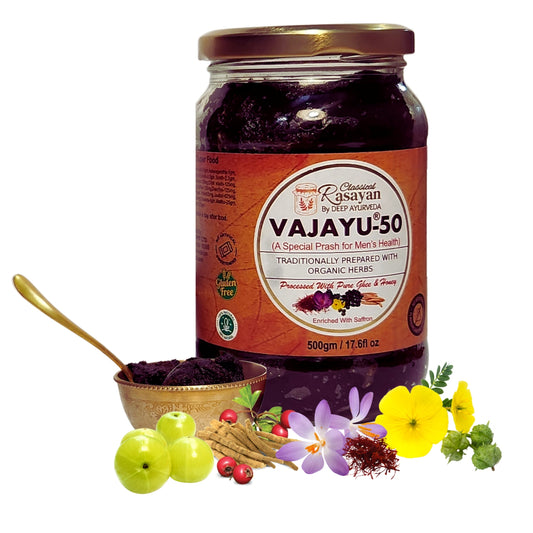Dysmenorrhea is when a woman feels pain or discomfort, “cramps” during and a couple of days before menstruation. In Ayurveda, the menstrual cycle is termed – Aartava and this is type of aartava is called as Kasht – Aartava. Here Kasht is the pain and Aartava is the same – Periods. So this is all about the painful menstrual cycles.
As per the search studies reports almost 50 % of the Indian women’s population is suffering from Dysmenorrhea, and all of them feel that it is common to happen so, since every next women’s is having this problem, and they keep on doing this kind of things only “Suppressing” this conditions by taking some kind of drugs – mostly pain killers or anti-spasmodic drugs. While this taking drugs it is not curing but getting temporary relief by the drugs.
But Ayurveda – the world’s most antique and most ancient pure science – 5,000 years old, will treat this symptoms and cause very carefully, fully scientifically. Ayurveda tells that dysmenorrhea is due to vitiation of three doshas Vata, Pitta and Kapha. Vata dose governs circulation, Pitta dose governs metabolism; Kapha dose governs structure and persistence. This is the basic principle of ayurvedic dysmenorrhea treatment and period pain.
In this blog, we will discuss the causes, risk factors, symptoms, Ayurvedic point of view, and the medications.
What are the Types of Dysmenorrhea?
Primary and secondary dysmenorrhea are the two different types of dysmenorrhea.
1. Primary type: The most common and clinically significant form of the disease. It is a pattern of severe, debilitating cramps that does not arise as a result of a different underlying illness. Symptoms may be reflected as backache, leg pain, nausea, vomiting, diarrhea, headache, and dizziness. This type of condition usually occurs in women who are within two years of the onset of menstruation and lasts one or two days each month.
2. Secondary type: The cram may be the result of endometriosis, adenomyosis (a benign enlargement of the endometrium into the muscular layer of the uterus), pelvic inflammatory disease, uterine fibroids, cervical narrowing or uterine malposition, pelvic tumors, or intra-uterine contraception device. The disease generally occurs in older women.
3. Cramps: When the menstrual period begins, prostaglandin is produced by the endometrial cells as they are shed from the uterus lining; they cause the uterine muscles to contract. If excessive quantities of prostaglandin are produced, a normal contraction reaction quickly becomes a sturdy and intense spasm. While it spasms, the blood flow quickly slows, depriving the uterine muscle of oxygen and causing a cramp. The muscular contractions themselves assist in the expulsion of the menstrual discharge.
Excessive quantities of prostaglandin are also responsible for the separation of the smooth muscles of the intestines, resulting in diarrhea, nausea, and vomiting. Headache and lightheadedness may likewise follow high prostaglandin production.
What are the Causes of Dysmenorrhea?
Based on the aforementioned information, dysmenorrhea can be divided into two categories: primary and secondary. The former presents with persistent menstrual pain that has no anatomical cause; the latter, on the other hand, is caused by specific triggering factors.
- Primary dysmenorrhea is most likely differentiated from the imbalance of Vata Dosha. In this case, an increase in Apana Vata – the sub dosha responsible for the downward course of menstrual flow – is a facilitator.
- Secondary dysmenorrhea, on the other hand, occurs as a result of other pathology. This can be hormonal imbalances, as prostaglandins promote excessive uterus contractions and, respectively, increasing the pain. Other causes of this condition are as follows: PID; tumors or polyps in pelvic cavity; and abnormal pregnancy.
Other causes include :
- Uterine fibroid
- Abnormal pregnancy
- Infections
- Pelvic inflammtory disease(PID)
- Tumors or polyps in pelvic cavity
What are the Risk Factors for Dysmenorrhea?
Factors that correlate with a higher chance of developing dysmenorrhea:
- An early age of menarche.
- Family history: Women with a family history of dysmenorrhea are more likely to experience it if their mother or sister had period pain, they are at greater risk for developing it.
- Smoking and drinking alcohol: Researchers have noted that smoking and alcohol consumption seem to increase the chance of experiencing dysmenorrhea.
- Overweight: Women with more weight are more susceptible to painful menstruation.
What are the Symptoms of Dysmenorrhea?
Symptoms of dysmenorrhea include the following:
- Lower abdominal cramps can range in severity during menstruation.
- Symptoms include nausea, vomiting, and diarrhea.
- Dizziness or headaches.
- Tiredness and mood swings
- Backache or pain radiating down the legs.
Ayurvedic Insights into Dysmenorrhe
Ayurvedic Perspective on Dysmenorrhea: As per Ayurveda, dysmenorrhea is considered to be an imbalance of the body doshas, especially Vata. Ayurvedic dysmenorrhea treatment for its correction include:
- Balancing Vata Dosha: Ayurvedic herbs such as Ashoka and Shatavari help to alleviate the symptoms of pain and swelling by balancing Vata Dosha.
- Strengthening the Reproductive System: Dashmoolarishta and Kumari Asava, Ayurvedic medicines, are used to strengthen these organs, adjust the hormonal balance, and therefore improve health regarding menstrual ailments.
The Best Ayurvedic Panchakarma Therapies for Dysmenorrhea
The top Panchakarma therapies, Ayurvedic detoxification, and rejuvenation techniques are recommended for people with dysmenorrhea:
- Abhyanga: A full body massage carried out with warm oil to increase blood circulation and relaxation, thereby reducing pain.
- Basti: This uses a medicated herbal enema and is used to relieve pain.
- Swedana: A steam bath to increase blood circulation, reduce inflammation, and therefore reduce pain.
- Nasya: This involves balancing the body's hormones through nasal administration and can be used to relieve congestion from the pelvic area.
Mode of Cure through Deep Ayurveda
By balancing the doshas and using panchakarma therapies, Ayurveda treats the underlying causes. Dysmenorrhea Treatment with Ayurveda have demonstrated encouraging results in symptom relief and improving general menstrual health. It depends on how Ayurvedic functions actively in an individual, the number of symptoms they have to suppress, and most importantly, whether the individual is following the protocols or not.
With the best and most professional Ayurveda experts who can handle gynecology cases and other disorders, Deep Ayurveda has been the best Ayurvedic treatment and consultation provider in Australia.
If you want to learn more, please visit our website, Deep Ayurveda. We provide a variety of Ayurvedic packages, such as the Rejuvenation and Distress Package and the Panchakarma Package, which can help with menstrual symptoms and improve overall health during periods. Furthermore, we also have the best Ayurvedic professionals available here with us for more personalized treatment. So, book your Ayurveda consultation with Dr. Baldeep Kour at Deep Ayurveda today!






